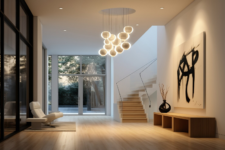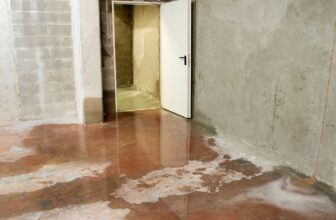
The Impact of Lighting on Interior Design
Lighting in interior design transcends mere functionality. It’s an essential component that significantly influences the ambiance, mood, and perception of spaces. Lighting impacts a room’s aesthetics and the well-being and productivity of the occupants.
Given this, it’s only fitting to consider lighting when designing an interior space.
Lighting and Interior Design
Lighting can influence the perception of a space. It enhances the color, sets the mood, and even affects the perceived size of a room. Good lighting design can create a visually dynamic and functional environment, creating an atmosphere that complements the space’s design and functionality.
You are not imagining it—that overhead fluorescent lighting could indeed be keeping you more alert. Similarly, the soothing effect of a table lamp’s warm, amber light in your living room is intentional.
A study found that natural light in various rooms significantly enhanced emotional well-being. Bright lighting, for example, can improve alertness and energy, which is ideal for kitchens and office spaces. Dim, warmer lighting is suitable for creating a relaxing atmosphere in bedrooms and living areas.
Natural light is linked to increased productivity and improved mood. Daylight helps regulate human circadian rhythms, which are essential for overall health.
Different Lighting Types and Its Impact on Interior Design
Now that you know more about the impact of lighting, what types of lighting should you consider for your interior space? Let’s find out:
Ambient lighting
Also known as general lighting, this is the foundation of any lighting plan. It provides the overall illumination of a space, allowing for safe movement and essential visibility. Common ambient lighting sources can be ceiling fixtures and natural light through windows.
Ambient light quality and color temperature can dramatically affect a room’s feel. Warmer tones deliver a cozy atmosphere, while cooler lights simulate daylight, enhancing focus and energy levels.
Task lighting
This type of lighting is a must in areas where specific activities require focused light. Examples include:
- Under-cabinet lighting in kitchens for food preparation
- Desk lamps in home offices for reading
- Vanity lights in bathrooms

Adequate task lighting should be free of distracting glares and shadows, enhancing functionality without compromising comfort.
Accent lighting
Accent lighting is decorative, highlighting architectural features, artwork, or other essential room elements. It can create visual interest and draw the eye to areas of the home that might otherwise go unnoticed.
Choosing the Right Light Fixtures: Best Practices
Picking the light fixture to adorn your home involves more than picking out the design that suits your taste. You also have to think about how it will enhance your spaces’ functionality.
Here are some detailed considerations to remember when shopping for lighting fixtures from Visual Comfort:
Consider the style of your home.
The choice of light fixtures should harmonize with your home’s interior architecture and decor. This involves matching the lighting with the overall theme or era of the design. For instance, a modern minimalist home might benefit from sleek, metallic fixtures.
On the other hand, a house with a rustic charm would better suit fixtures in earth tones or natural materials. Assessing the lines, forms, and materials of your interior spaces can guide you in choosing fixtures that complement rather than clash.
Choose quality over quantity
Investing in high-quality light fixtures pays off in the long run. Superior fixtures last longer and provide better light quality. Higher-quality fixtures often feature better designs, durable materials, and superior craftsmanship.
They also tend to incorporate more advanced technology, like energy-efficient LEDs, which can reduce your home’s energy consumption. While these fixtures may have a higher initial cost, their efficiency and durability can lead to savings over time.
Evaluate lighting control options.
Consider their compatibility with control systems that enhance functionality and convenience. Modern lighting controls allow you to adjust lighting based on your current needs or the time of day.
Here are some points to consider regarding lighting control:
- Dimmers: Installing dimmers can significantly enhance the versatility of your lighting. You can customize the brightness of the lights to suit different activities or times of the day. This cost-saving feature allows you to save energy and extend the life of your bulbs.
- Smart lighting: Technological advances have made intelligent lighting systems more accessible. You can control them via mobile phones or voice assistants, offering the ultimate convenience.

- Sensors: Consider using motion or occupancy sensors in rooms where lights do not need to be on at all times. These sensors can help reduce energy consumption by ensuring lights are only on when the space is in use.
Understand the Psychology of Lighting in Interior Design
Adequate lighting is crucial for creating a desirable atmosphere in any home. It goes beyond mere functionality—it enhances mood, alters perception, and can affect well-being.
With the right lighting fixtures, homeowners can enhance the functionality and aesthetics of their spaces. Consider how each light source influences the environment and how you can optimize this essential element to create your ideal home atmosphere.



















































































